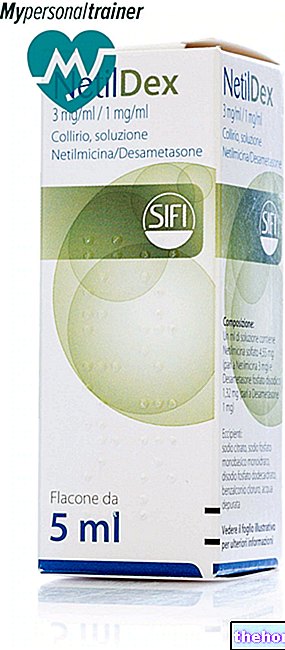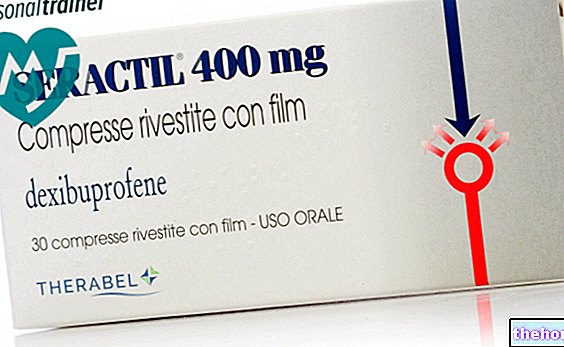Active ingredients: Aciclovir
ZOVIRAX 5% Cream
Zovirax package inserts are available for pack sizes:- ZOVIRAX 5% Cream
- ZOVIRAX 3% Ophthalmic ointment
- ZOVIRAX 200 mg - Tablets, ZOVIRAX 400 mg - Tablets, ZOVIRAX 800 mg - Tablets, ZOVIRAX 400 mg / 5 ml - Oral suspension
Why is Zovirax used? What is it for?
PHARMACOTHERAPEUTIC CATEGORY
Aciclovir is an antiviral with activity against herpes viruses, including the Herpes Simplex virus and the Varicella-Zoster virus.
THERAPEUTIC INDICATIONS
ZOVIRAX cream is indicated for the treatment of Herpes simplex skin infections such as:
- primary or relapsing genital herpes
- herpes of the lips
Contraindications When Zovirax should not be used
ZOVIRAX cream is contraindicated in patients with known hypersensitivity to aciclovir, valaciclovir, propylene glycol or any of the other ingredients of ZOVIRAX cream.
Precautions for use What you need to know before you take Zovirax
Aciclovir cream is not recommended for ophthalmic use, nor is it recommended for application on the mucous membranes of the mouth or vagina as it may be irritating.
Particular care should be taken to avoid accidental application into the eye.
Animal studies indicate that application of ZOVIRAX cream into the vagina may cause reversible irritation.
In severely immunocompromised patients (AIDS patients or bone marrow transplant patients) administration of aciclovir in oral formulations should be considered. Such patients should be recommended to consult their physician regarding the treatment of any infection.
The use of the product, especially if prolonged, can give rise to sensitization phenomena, where this happens it is necessary to stop the treatment and consult the attending physician.
There are no reports of addiction or dependence on the drug.
Interactions Which drugs or foods may change the effect of Zovirax
Tell your doctor or pharmacist if you have recently taken any other medicines, even those without a prescription. No clinically significant interactions have been identified.
Warnings It is important to know that:
Ask your doctor or pharmacist for advice before taking any medicine.
The propylene glycol contained in the medicine can cause skin irritation.
The cetostearyl alcohol contained in the medicine can cause local skin reactions (eg contact dermatitis).
Pregnancy
Ask your doctor or pharmacist for advice before taking any medicine.
The use of aciclovir should only be considered if the potential benefits outweigh the possibility of unknown risks however, systemic exposure to aciclovir following topical application of aciclovir cream is very low.
A registry of post-marketing use of aciclovir in pregnancy provided data on pregnancy outcomes in women exposed to the various aciclovir formulations. These observations did not show an increase in the number of birth defects among subjects exposed to aciclovir in compared to the general population and all birth defects found showed no particularity or common characteristics, such as to suggest a single cause.
Systemic administration of aciclovir in internationally accepted standard tests did not produce embryonic toxicity or teratogenic effects in rabbits, rats or mice.
In an experimental test in rats not included in the classic teratogenic tests, abnormalities of the fetus were observed after subcutaneous doses of aciclovir so high as to produce toxic effects in the mother. However, the clinical relevance of these findings is uncertain.
Feeding time
Limited data indicate that the drug is found in breast milk following systemic administration. However, the dose received by an infant following the use of aciclovir cream in the mother should be insignificant.
Effects on ability to drive and use machines
None known
Dosage and method of use How to use Zovirax: Dosage
ZOVIRAX cream should be applied 5 times a day at approximately 4 hour intervals.
ZOVIRAX cream should be applied to lesions or areas where they are developing as soon as possible preferably during the earliest stages (prodrome or erythema). Treatment can also be started during the later stages (papules or vesicles).
Treatment should continue for at least 4 days for herpes labialis and for 5 days for herpes genitalis. If there is no healing, the treatment can continue for up to 10 days.
Overdose What to do if you have taken too much Zovirax
In case of accidental ingestion / intake of an overdose of Zovirax, notify your doctor immediately or go to the nearest hospital.
Even if the entire contents of a 10g tube of cream containing 500mg of acyclovir are ingested, no undesirable effects should be expected.
If you have any questions about the use of Zovirax, ask your doctor or pharmacist.
Side Effects What are the side effects of Zovirax
Like all medicines, Zovirax can cause side effects, although not everybody gets them.
The following convention has been used for the classification of undesirable effects in terms of frequency: very common> 1/10, common> 1/100 and 1 / 1,000 and 1 / 10,000 and
Data from these clinical studies were used to assign frequency categories to adverse reactions observed during clinical trials using aciclovir 3% ophthalmic ointment. Due to the nature of the adverse events observed, it is not possible to determine unambiguously which events are related to drug administration and which are related to the disease itself. The data from spontaneous reports were used as a basis to determine the frequency of those events detected by post-marketing pharmacovigilance.
Skin and subcutaneous tissue disorders
Uncommon: Transient burning or pain after application of ZOVIRAX cream Moderate dryness and peeling of the skin Itching
Rare: Erythema. Contact dermatitis after application. Where sensitivity tests were conducted, it was shown that the substances that gave phenomena of reactivity were the components of the base cream rather than acyclovir.
Disorders of the immune system
Very rare: immediate hypersensitivity reactions including angioedema and urticaria
Compliance with the instructions contained in the package leaflet reduces the risk of undesirable effects.
Reporting of side effects
If you get any side effects, talk to your doctor or pharmacist. This includes any possible side effects not listed in this leaflet. Side effects can also be reported directly via the national reporting system at https://www.aifa.gov.it/content/segnalazioni-reazioni-avverse. By reporting side effects you can help provide more information on safety of this medicine.
Expiry and Retention
Expiry: see the expiry date printed on the package.
Warning: do not use the medicine after the expiry date shown on the package.
The expiry date refers to the product in intact packaging, correctly stored.
Store at a temperature not exceeding 25 ° C, do not refrigerate.
Medicines should not be disposed of via wastewater or household waste.
Ask your pharmacist how to throw away medicines you no longer use. This will help protect the environment.
Keep this medicine out of the sight and reach of children.
Composition and pharmaceutical form
COMPOSITION
One gram of cream contains:
Active ingredient: aciclovir 50 mg
Excipients: poloxamer 407, cetostearyl alcohol, sodium laurilsulfate, white petroleum jelly, liquid paraffin, Arlacel 165, dimethicone 20, propylene glycol, purified water.
PHARMACEUTICAL FORM AND CONTENT
Cream for skin use
10g tube of 5% acyclovir cream.
Source Package Leaflet: AIFA (Italian Medicines Agency). Content published in January 2016. The information present may not be up-to-date.
To have access to the most up-to-date version, it is advisable to access the AIFA (Italian Medicines Agency) website. Disclaimer and useful information.
01.0 NAME OF THE MEDICINAL PRODUCT
ZOVIRAX
02.0 QUALITATIVE AND QUANTITATIVE COMPOSITION
ZOVIRAX 200 mg Tablets
One tablet contains:
Active ingredient: aciclovir 200.0 mg.
ZOVIRAX 400 mg Tablets
One tablet contains:
Active ingredient: aciclovir 400.0 mg.
ZOVIRAX 800 mg Tablets
One tablet contains:
Active ingredient: aciclovir 800.0 mg.
ZOVIRAX 400 mg / 5 ml Oral suspension
5 ml of suspension contain:
Active ingredient: aciclovir 400.0 mg.
For the full list of excipients see section 6.1.
03.0 PHARMACEUTICAL FORM
Tablets, oral suspension.
04.0 CLINICAL INFORMATION
04.1 Therapeutic indications
ZOVIRAX is indicated:
• for the treatment of virus infections Herpes simplex (HSV) of the skin and mucous membranes, including primary and relapsing genital herpes (excluding neonatal HSV and severe HSV infections in immunocompromised children);
• for the suppression of relapses from Herpes simplex in immunocompetent patients;
• for the prophylaxis of infections Herpes simplex in immunocompromised patients;
• for the treatment of chickenpox and herpes zoster.
04.2 Posology and method of administration
Dosage in adults
Treatment of Herpes simplex infections
One tablet of 200 mg 5 times a day at intervals of approximately 4 hours, omitting the night dose.
Treatment should be continued for 5 days but prolongation may be necessary in cases of severe primary infections.
In severely immunocompromised patients (eg after bone marrow transplantation) or in patients with impaired absorption from the gut, the dosage can be doubled to 400 mg in tablets or 5 ml of the suspension or, alternatively, the advisability of a intravenous administration of aciclovir.
Therapy should be started as early as possible from the first signs of an infection and in the case of recurrent infections this should preferably occur during the prodromal phase or when the first lesions appear.
Suppressive therapy of relapses of Herpes simplex infections in immunocompetent patients
One 200 mg tablet 4 times a day at 6 hour intervals.
Many patients can be successfully treated by administering 400 mg tablets or 5 ml suspension twice daily at 12 hour intervals.
Dosages of 200 mg 3 times a day at 8-hour intervals or 2 times a day at 12-hour intervals may also be effective.
Relapses of infection may occur in some patients with a total daily dose of 800 mg of ZOVIRAX.
Therapy should be interrupted periodically at intervals of 6 or 12 months, in order to observe any changes in the natural history of the disease.
Prophylaxis of Herpes simplex infections in immunocompromised patients
One 200 mg tablet 4 times a day at 6 hour intervals. In severely immunocompromised patients (eg after bone marrow transplantation) or in patients with impaired absorption from the gut the dosage can be doubled to 400 mg in tablets or 5 ml of the suspension or, alternatively, the appropriateness of administration can be considered. of intravenous acyclovir.
The duration of prophylaxis must be considered in relation to that of the risk period.
Treatment of herpes zoster and chickenpox
800 mg in tablets or 10 ml of suspension 5 times a day at intervals of approximately 4 hours, omitting the night dose. Treatment should be continued for 7 days.
In severely immunocompromised patients (eg after a bone marrow transplant) or in patients with impaired intestinal absorption, intravenous administration of aciclovir may be considered.
The therapy must be started immediately after the onset of the infection, in fact the treatment obtains better results if established when the first lesions appear.
Dosage in children
For the treatment of infections with Herpes simplex and for the prophylaxis of the same in immunocompromised children over 2 years of age, the dosage is similar to that of adults. Under two years the dosage is reduced by half. Serious HSV infections in the immunocompromised, for which Zovirax is not indicated is an exception (see section 4.1).
For the treatment of chickenpox, in children over 6 years of age the dosage is 800 mg in tablets or 10 ml of suspension 4 times a day; in those aged between 2 and 6 years the dosage is 400 mg in tablets or 5 ml of suspension 4 times a day; in those younger than 2 years the recommended dosage is 200 mg (2.5 ml of suspension) 4 times a day. The administration of 20 mg / kg of body weight (not exceeding 800 mg) 4 times a day, allows a more precise dosage adjustment. Treatment should be continued for 5 days.
No specific data are available on the suppression of infections with Herpes simplex or the treatment of herpes zoster in immunocompetent children.
For the treatment ofShingles intravenous administration of aciclovir should be considered in immunocompromised children.
Dosage in elderly patients
The possibility of renal impairment should be taken into account in the elderly and the dosage should be adjusted accordingly (see below Dosage in patients with renal insufficiency).
Adequate hydration should be maintained in patients taking high doses of oral ZOVIRAX.
Dosage in patients with renal insufficiency
Caution is advised when administering aciclovir to patients with impaired renal function. Adequate hydration must be maintained.
In the treatment and prophylaxis of Herpes simplex, in patients with impaired renal function the recommended oral posology should not cause accumulation of aciclovir above the levels deemed acceptable for intravenous administration of the drug. However, in patients with severe renal insufficiency (creatinine clearance less than 10 ml / min), it is recommended to adjust the dose to 200 mg administered twice daily at approximately 12 hour intervals.
In the treatment of chickenpox and herpes zoster it is recommended to change the dosage to 800 mg in tablets or 10 ml suspension administered twice daily at approximately 12 hour intervals in patients with severe renal insufficiency (creatinine clearance less than 10 ml / min) and 800 mg in tablets or 10 ml suspension 3 times a day, administered at intervals of approximately 8 hours, in patients with moderate renal insufficiency (creatinine clearance between 10 and 25 ml / min).
04.3 Contraindications
ZOVIRAX tablets and ZOVIRAX oral suspension are contraindicated in patients with known hypersensitivity to aciclovir, valaciclovir or to any of the excipients.
Generally contraindicated in pregnancy and lactation (see section 4.6).
04.4 Special warnings and appropriate precautions for use
Use in elderly patients and patients with renal insufficiency
Aciclovir is eliminated by renal clearance, therefore the dose should be reduced in patients with renal insufficiency (see section 4.2). Elderly patients are likely to have impaired renal function and therefore the need for dose reduction should be considered in this patient group. Both elderly patients and patients with renal insufficiency are at increased risk of developing neurological side effects and should be carefully monitored for these effects. In reported reports these reactions were generally reversible upon discontinuation of treatment (see section 4.8).
Prolonged or repeated courses of aciclovir in severely immunocompromised subjects may result in the selection of resistant viral strains with reduced sensitivity that may not respond to continued aciclovir treatment (see section 5.1).
State of hydration: Ensure that adequate hydration is maintained in patients taking high doses of oral aciclovir.
Shake the suspension before use.
ZOVIRAX 200 mg tablets contain lactose therefore it is not suitable for subjects with lactase deficiency, galactosemia or glucose / galactose malabsorption syndrome.
04.5 Interactions with other medicinal products and other forms of interaction
No clinically significant interactions have been identified.
Aciclovir is primarily eliminated unchanged in the urine via active renal tubular secretion. Any concomitantly administered drug that competes with this mechanism may increase aciclovir plasma concentrations. Probenecid and cimetidine through this mechanism cause an increase in the area under the curve of aciclovir plasma concentrations and therefore decrease its renal clearance. Similarly, the concomitant administration of aciclovir and mycophenolate mofetil, an immunosuppressive agent used in transplant patients, results in a increase in the area under the plasma concentration curve of both aciclovir and the inactive metabolite of mycophenolate mofetil. However, no dosage adjustment is necessary in view of the broad therapeutic index of aciclovir.
04.6 Pregnancy and breastfeeding
Fertility
See Clinical Studies section 5.2 and section 5.3.
Pregnancy
The use of aciclovir should only be considered when the potential benefits of treatment outweigh any possible unknown risks.
A registry on the use of aciclovir in pregnancy provided data on pregnancy outcomes in women exposed to the various formulations of aciclovir after marketing. These observations did not show an increase in the number of birth abnormalities among subjects exposed to aciclovir in comparison. to the general population and all the birth defects found showed no particularity or common characteristics that would suggest a single cause.
Since clinical data on administration in pregnancy are limited, during this period the drug should be administered only in cases of absolute necessity under direct medical supervision.
Feeding time
Following oral administration of aciclovir 200 mg, 5 times / day, the presence of aciclovir in breast milk was observed at concentrations equal to 0.6-4.1 times the corresponding plasma levels. Such levels would potentially expose infants to aciclovir doses of up to 0.3 mg / kg / day. Therefore, caution is advised in the use of aciclovir during lactation.
04.7 Effects on ability to drive and use machines
The clinical condition of the patient and the adverse event profile of aciclovir should be taken into account with regard to the patient's ability to drive and use machines. No studies have been performed to investigate the effects of aciclovir on the ability to drive and operate machinery. Further harmful effects on these activities cannot be predicted from the pharmacology of the active ingredient.
04.8 Undesirable effects
The frequency categories associated with the adverse events listed below are estimates. Adequate incidence assessment data are not available for most events. In addition, the incidence of adverse events may vary by indication.
The following convention has been used for the classification of undesirable effects in terms of frequency: very common ≥ 1/10, common ≥1 / 100 and
Disorders of the blood and lymphatic system
Very rare: anemia, leukopenia, thrombocytopenia
Disorders of the immune system
Rare: anaphylaxis
Psychiatric disorders and pathologies of the nervous system
Common headache, dizziness
Very rare: agitation, confusional state, tremor, ataxia, dysarthria, hallucinations, psychotic symptoms, convulsions, somnolence, encephalopathy, coma
The above events are usually reversible and generally occur in patients with renal insufficiency or other predisposing factors (see section 4.4).
Respiratory, thoracic and mediastinal disorders
Rare: dyspnoea
Gastrointestinal disorders
Common: nausea, vomiting, diarrhea, abdominal pain
Hepatobiliary disorders
Rare: reversible increases in bilirubin and liver enzymes
Very rare: hepatitis, jaundice
Skin and subcutaneous tissue disorders
Common: pruritus, rash (including photosensitivity)
Uncommon: urticaria. Rapid and widespread hair loss
Rapid and widespread hair loss has been associated with a "wide range of conditions and drug use," so the relationship of this occurrence to acyclovir therapy is uncertain.
Rare: angioedema
Renal and urinary disorders
Rare: BUN and creatinine increases. Very rare: acute renal failure, renal pain
Kidney pain can be associated with kidney failure.
General disorders and administration site conditions
Common: fatigue, fever
04.9 Overdose
Symptoms and signs: aciclovir is only partially absorbed from the intestine. Patients who have occasionally ingested an overdose of up to 20 g of aciclovir in a single dose have generally not experienced unexpected effects. Accidental and repeated overdoses of oral aciclovir over several days have been associated with gastrointestinal effects (such as nausea and vomiting) and neurological effects (headache and confusion).
Overdoses of intravenous aciclovir have resulted in increases in serum creatinine levels, blood urea nitrogen resulting in renal failure. Neurological effects including confusion, hallucinations, agitation, convulsions and coma, associated with overdose have been described.
Treatment: patients should be carefully observed for any signs of toxicity. Hemodialysis significantly contributes to the elimination of aciclovir from the blood and may, therefore, be considered an option for symptomatic overdose.
05.0 PHARMACOLOGICAL PROPERTIES
05.1 Pharmacodynamic properties
Pharmacotherapeutic group: Direct acting antivirals for systemic use - nucleosides and nucleotides excluding reverse transcriptase inhibitors.
ATC code: J05AB01.
Mode of action
Aciclovir is a synthetic purine nucleoside analog with inhibitory activity, in vitro and in vivo, against human herpes viruses, including the virus Herpes simplex (HSV) types 1 and 2, the virus Varicella zoster (VZV), the virus Epstein Barr (EBV) and cytomegalovirus (CMV).
In cell cultures, aciclovir exhibited the greatest antiviral activity against HSV-1, followed (in order of decreasing potency) by HSV-2, VZV, EBV and CMV.
The inhibitory activity of aciclovir against HSV-1 and HSV-2, VZV, EBV and CMV is highly selective. The thymidine kinase (TK) enzyme of normal, uninfected cells does not effectively use aciclovir as a substrate; therefore the toxicity for mammalian host cells is low; on the contrary, the viral thymidine kinase encoded by HSV, VZV and EBV converts aciclovir into acyclovir monophosphate, a nucleoside analogue, which is further converted into di-phosphate and tri-phosphate by cellular enzymes. Aciclovir tri-phosphate interferes with viral DNA polymerase and inhibits viral DNA replication; its incorporation into viral DNA causes the interruption of the DNA chain elongation process.
Pharmacodynamic effects
Prolonged or repeated courses of aciclovir in severely immunocompromised patients may be associated with the selection of viral strains with reduced sensitivity, which may not respond to prolonged aciclovir treatment.
Most of the isolated viral strains, with reduced sensitivity, showed a relative deficiency of viral thymidine kinase; however, strains with altered viral thymidine kinase or DNA polymerase have also been observed. Even the exhibition, in vitro, to aciclovir, of isolated HSV strains, may be associated with the appearance of less sensitive strains. The relationship between sensitivity, determined in vitro, of the isolated HSV strains and the clinical response to aciclovir therapy is unclear.
All patients should be advised to try to avoid any possible transmission of the virus, particularly when active lesions are present.
05.2 Pharmacokinetic properties
Absorption
Aciclovir is only partially absorbed from the intestine.
Peak steady state plasma concentrations (Cssmax) after doses of 200 mg every 4 hours is 3.1 mcMol (0.7 mcg / ml) and the trough concentration (Cssmin) is 1.8 mcMol (0.4 mcg / ml).
After doses of 400 mg and 800 mg every 4 hours the Cssmax, respectively, is 5.3 mcMol (1.2 mcg / ml) and 8 mcMol (1.8 mcg / ml) and the (Cssmin) is 2.7 mcMol (0.6 mcg / ml) and 4 mcMol (0.9 mcg / ml) in adults, respectively.
In adults, the mean Cssmax after a one-hour infusion of 2.5 mg / kg, 5 mg / kg and 10 mg / kg is 22.7 mcMol (5.1 mcg / ml), 43.6 mcMol ( 9.8 mcg / ml) and 92 mcMol (20.7 mcg / ml)
corresponding trough levels of Cssmin after 7 hours are, respectively, 2.2 mcMol (0.5 mcg / ml), 3.1 mcMol (0.7 mcg / ml) and 10.2 mcMol (2.3 mcg / ml) .
In children over one year of age, similar mean levels of Cssmax and Cssmin were observed when a dose of 5 mg / kg was administered instead of the 250 mg / m2 dose and a dose of 500 mg / m2 dose of 10 mg / kg. In infants up to 3 months of age, treatment with a dose of 10 mg / kg administered as a one-hour infusion at 8-hour intervals, the Cssmax was 61.2 mcMol (13.8 mcg / ml) and Cssmin was 10.1 mcMol (2.3 mcg / mL). A separate group of infants treated with 15 mg / kg every 8 hours showed approximately dose proportional increases, with a Cmax of 83.5 micromolar ( 18.8 mcg / ml) and a Cmin of 14.1 micromolar (3.2 mcg / ml).
Distribution
The drug levels in the CSF are approximately 50% of the plasma levels. Plasma protein binding is relatively poor (9 to 33%) and drug interactions due to binding site displacement are not expected.
Elimination
In adults aciclovir administered intravenously, the terminal half-life of the drug is approximately 2.9 hours. Most of the drug is excreted unchanged via the kidney. The renal clearance of aciclovir is considerably greater than that of creatinine, indicating that In addition to glomerular filtration, tubular secretion contributes to the renal elimination of the drug. The only important metabolite is 9-carboxymethoxymethylguanine corresponding to about 10-15% of the administered dose recovered in the urine.
When aciclovir is administered one hour after administration of 1 g probenecid, the terminal half-life and area under the plasma concentration versus time curve extends by 18% and 40%, respectively.
In infants up to 3 months of age treated with a dose of 10 mg / kg administered as a one-hour infusion at 8-hour intervals, the terminal plasma half-life is 3.8 hours.
Special populations
In patients with chronic renal failure, the mean half-life was found to be 19.5 hours. During hemodialysis, the mean half-life of aciclovir was 5.7 hours. Plasma levels of aciclovir are reduced by approximately 60% during dialysis.
In the elderly, total clearance decreases with increasing age along with a decrease in creatinine clearance although there is a slight modification of the terminal plasma half-life.
Studies have shown that there are no obvious changes in the pharmacokinetics of aciclovir or zidovudine when both are administered concurrently in HIV-infected patients.
Clinical Studies
There is no information on the effects of aciclovir oral formulations or solution for infusion on female fertility. In a study of 20 male patients with normal sperm counts, oral administration of aciclovir at doses up to 1 g per day for up to six months was shown to have no clinically significant effect on number, motility or the morphology of spermatozoa.
05.3 Preclinical safety data
Mutagenesis
The results of a large number of mutagenicity tests in vitro and in vivo indicate that aciclovir poses no genetic risk to humans.
Carcinogenesis
In long-term rat and mouse studies, acyclovir was not carcinogenic.
Fertility
In rats and dogs, largely reversible toxic effects on spermatogenesis have been reported only at doses significantly higher than therapeutic ones. Two-generation studies in mice revealed no effects of aciclovir, administered orally, on fertility.
Teratogenesis
Systemic administration of aciclovir using internationally accepted standard tests did not produce embryotoxic or teratogenic effects in rabbits, mice or rats.
In an experimental test not included in the standard tests, conducted on rats, fetal abnormalities were observed, but only after subcutaneous doses of aciclovir so high as to produce toxic effects on the mother. The clinical relevance of these findings is uncertain.
06.0 PHARMACEUTICAL INFORMATION
06.1 Excipients
ZOVIRAX 200 mg Tablets:
Lactose, Microcrystalline cellulose, Sodium starch glycolate, Povidone, Magnesium stearate.
ZOVIRAX 400 mg Tablets:
Microcrystalline cellulose, Sodium starch glycolate, Povidone, Magnesium stearate.
ZOVIRAX 800 mg Tablets:
Microcrystalline cellulose, Sodium starch glycolate, Povidone, Magnesium stearate.
ZOVIRAX 400 mg / 5 ml Oral suspension:
Sorbitol 70% (not crystallizable), Glycerol, Dispersible cellulose, Methyl p-hydroxybenzoate, Propyl p-hydroxybenzoate, Orange flavor 52.570 T, Purified water.
06.2 Incompatibility
Incompatibilities with other medicines are unknown.
06.3 Period of validity
200 mg tablets: 5 years
400 mg tablets: 5 years
800 mg tablets: 5 years
Oral suspension: 3 years
06.4 Special precautions for storage
Tablets: store in a dry place.
Suspension: Do not store above 30 ° C.
06.5 Nature of the immediate packaging and contents of the package
ZOVIRAX 200 mg - Tablets, PVC-Aluminum blister of 25 tablets
ZOVIRAX 400 mg - Tablets, PVC-Aluminum blister of 25 tablets
ZOVIRAX 800 mg - Tablets, PVC-Aluminum blister of 35 tablets
ZOVIRAX 400 mg / 5 ml - Oral suspension, 100 ml glass bottle with measuring spoon.
06.6 Instructions for use and handling
Bottle opening and closing: to open, press and turn at the same time. To close, screw tightly.
Unused medicine and waste derived from this medicine must be disposed of in accordance with local regulations.
07.0 MARKETING AUTHORIZATION HOLDER
GlaxoSmithKline S.p.A. - Via A. Fleming, 2 - Verona
08.0 MARKETING AUTHORIZATION NUMBER
ZOVIRAX 200 mg Tablets: A.I.C. 025298050
ZOVIRAX 400 mg Tablets: A.I.C. 025298074
ZOVIRAX 800 mg Tablets: A.I.C. 025298124
ZOVIRAX 400 mg / 5 ml Oral suspension: A.I.C. 025298086
09.0 DATE OF FIRST AUTHORIZATION OR RENEWAL OF THE AUTHORIZATION
200 mg tablets: July 27, 1987 / May 2005
400 mg tablets: March 1, 1990 / May 2005
800 mg tablets: March 22, 1993 / May 2005
Oral suspension: March 9, 1991 / May 2005
10.0 DATE OF REVISION OF THE TEXT
December 9, 2011




























